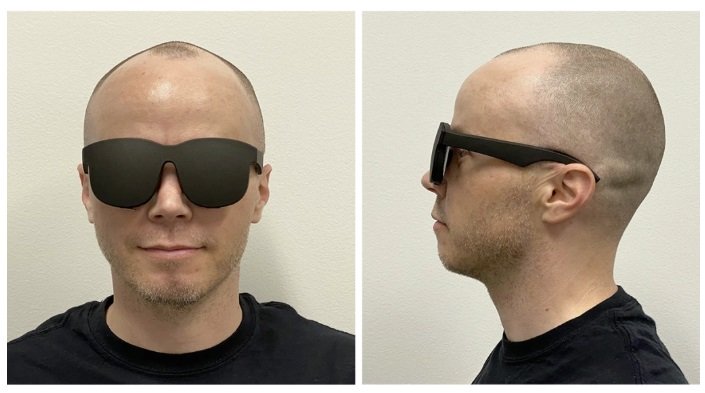SOCIAL
The Race to Develop AR and VR Wearables is Heating Up with New Advances from Facebook and Google

While social media platforms have seen big increases in usage amid the COVID-19 lockdowns, so too have virtual reality devices, with Facebook reporting that it’s been unable to keep up with demand for its Oculus Quest headsets.
The home quarantines have accelerated the take up of both AR and VR options, with people looking for ways to keep themselves entertained, in variance to going out and attending regular social events. That’s also pushed the various key players to advance the development of their AR and VR tools, and this week, we’ve seen two new announcements that could play a significant part in the next stage of digital connectivity.
First, Facebook has detailed its latest development in VR, using near-eye displays, “which combine the power of holographic optics and polarization-based optical folding” to enable the VR experience through sunglasses-like hardware.

As you can see here, the sunglasses-like model is significantly smaller than the current VR headsets, which could go a long way towards advancing consumer adoption, and enabling even more usage of VR in different environments.
As per Facebook:
“We anticipate that such lightweight and comfortable form factors may enable extended VR sessions and new use cases, including productivity.”
The advance is the next stage, following on from Facebook’s introduction of hand-tracking technology, which enables users to interact within VR without gloves or controllers.
By making VR more readily accessible, that could eventually see people engaging in VR environments while on, say public transport, or, in a more pressing use case, in the workplace, where Facebook has been working to develop new VR tools that can facilitate more practical engagement without having to be in the same office.

With more people likely to shift to work-from-home arrangements in the wake of COVID-19, this could become a key entry point for VR technology, and slimmer VR display devices could help improve the take up of the devices within the office space.
And it may also point to the next phase of AR integration, in the development of wearable AR glasses, which will enable users to interact with the world around them through digital overlays and connective tools.
On that front, it’s Google that’s taken the latest step, with the acquisition of AR glasses maker North and its fashionably designed smart glasses tech.

North was on the cusp of releasing version 2.0 of its Focals product (above), which provides various digital overlays on the lens, enabling users to stay connected.
As per Google:
“North’s technical expertise will help as we continue to invest in our hardware efforts and ambient computing future.”
Google, of course, was the first company to bring AR wearables to market, with Google Glass, though that device never saw significant consumer interest. Now, Google’s looking to step back in, and with Facebook and Apple also working on AR-enabled glasses, it might not be long before we see fully functional wearables on the market, which could change the game for the digital sector.
Indeed, Facebook acquired microLED maker Plessey back in March, giving it access to a key component for its AR glasses, while Apple is reportedly eyeing a 2023 release of its own AR glasses, putting all three on a similar timeline.
And they’re not the only players in the space – Snap Inc. continues to develop its Spectacles, with a view to AR functionality, while Pokemon Go creator Niantic recently acquired augmented reality startup 6D.ai, which is not a hardware developer, as such, but will give Niantic a new platform for the development of advanced AR models.
With consumers looking for new ways to engage within digital environments, and eCommerce on the rise, AR and VR are the next logical steps, and the increased attention as a result of COVID-19 has sparked a new flurry of activity, which could see that next stage arrive sooner than many expect.
It still feels like a long way off, but in the near future, it’s likely that AR and VR wearables will become more commonplace. And that will open up a range of new opportunities for digital marketers. Think ads in simulated environments, advanced virtual ‘try-on’ tools, location-triggered offers, etc.
The opportunity is not there yet, but the next stage is coming. Now we wait to see who takes the leap first, with the next stage of AR tech.
